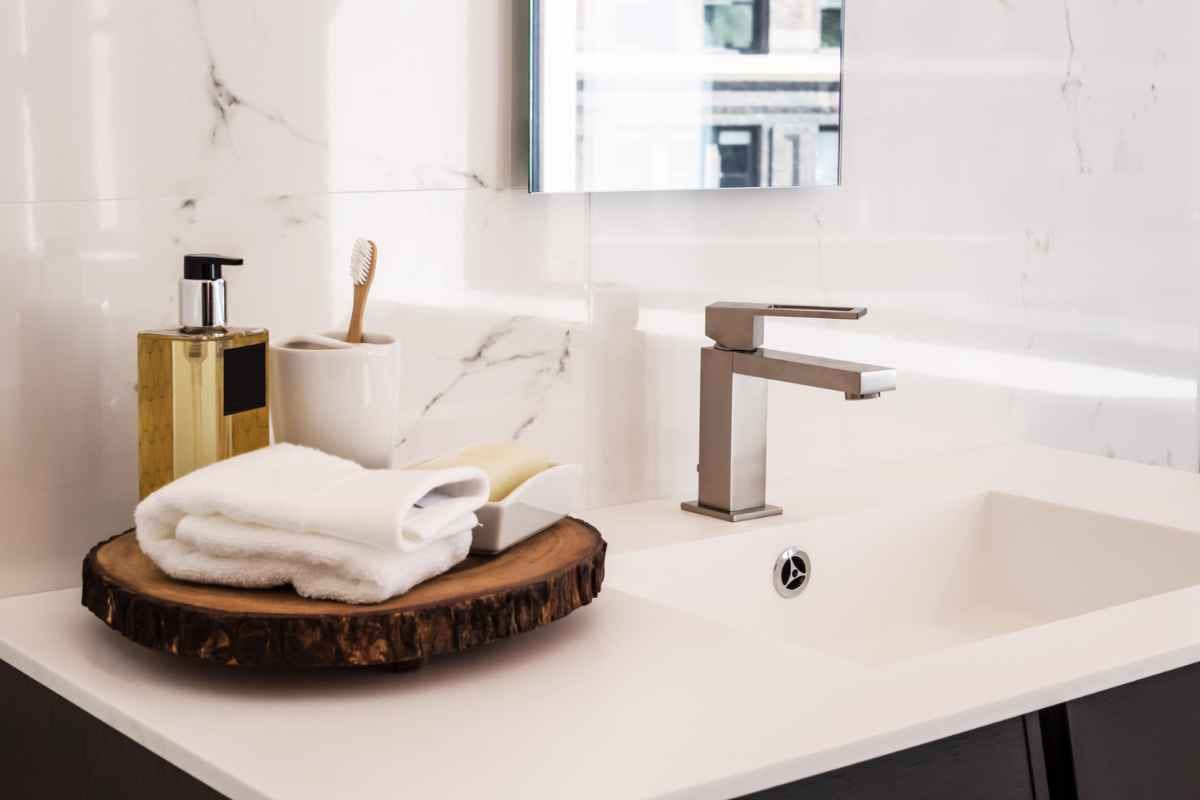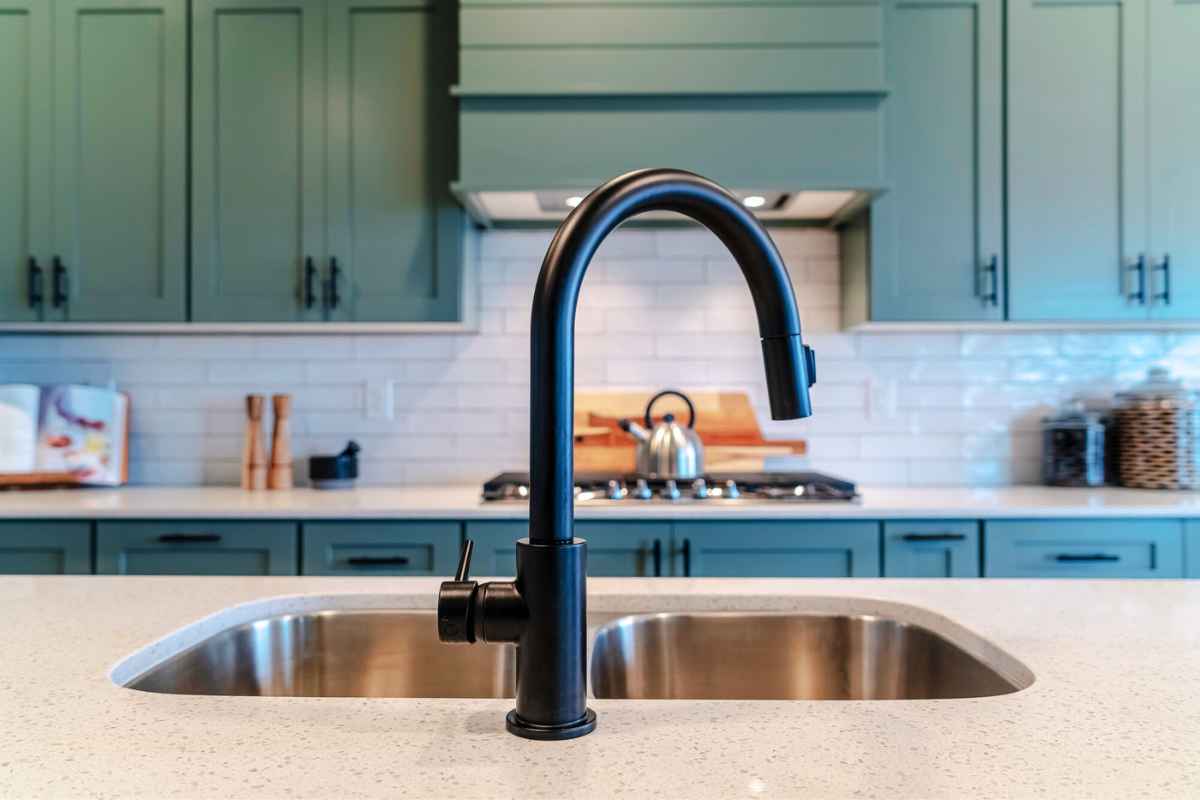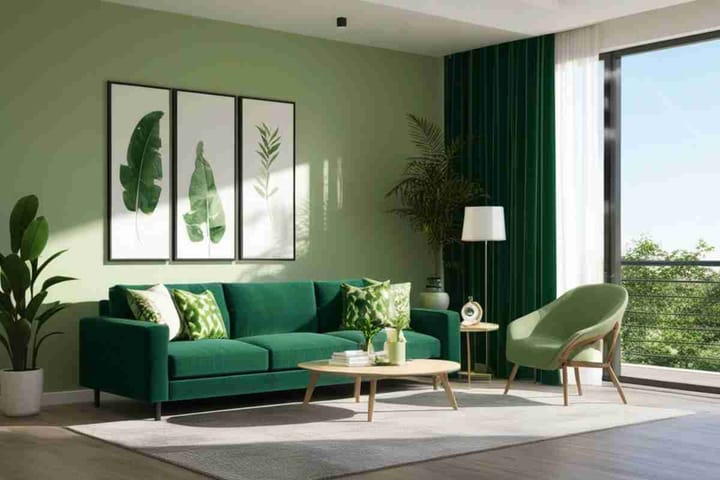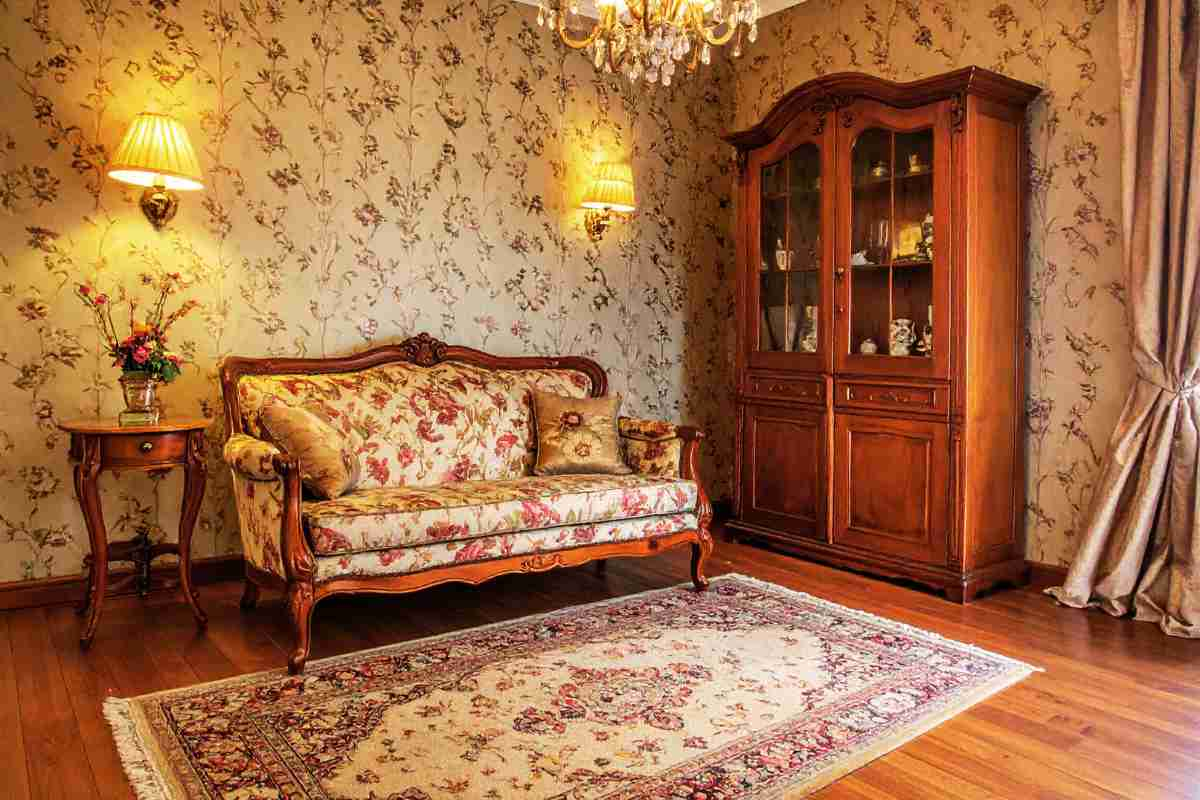The Ultimate Guide To Selecting Kitchen And Bathroom Fixtures For Your Home
Kitchen and bathroom fixtures is vital for functionality and ambiance. This guide helps balance style and practicality, ensuring your choices fit your lifestyle and stay on trend.

When diving into the vast world of home renovations, selecting the right kitchen and bathroom fixtures emerges as a critical task, overshadowing mere aesthetic choices with a profound impact on daily functionality and the overall ambiance of these essential spaces.
This guide embarks on a mission to navigate you through the myriad options available, marrying style with practicality and ensuring your selections resonate not only with your current lifestyle but also adapt to future trends. Here's your roadmap to cultivating a space that feels both personalized and timeless, ensuring every selection—from tapware with modern gunmetal styles to the warm glow of under-cabinet lighting—adds value, comfort, and style to your home.
Understanding Your Space and Needs
- Assessing Your Space
Your renovation journey begins with a comprehensive assessment of your kitchen and bathroom spaces. It's crucial to consider not just the square footage but the overall spatial dynamics, including ceiling height, natural light sources, and existing architectural elements. Evaluate how these spaces integrate with the rest of your home to create a cohesive look and feel. For instance, an open-plan kitchen should seamlessly transition into the living area, both in functionality and design.
Take note of the natural flow of these spaces. Are there areas that feel cramped or underutilized? Could changing the layout or adding specific types of fixtures enhance the space's usability? For example, under-cabinet lighting can brighten countertops in kitchens with limited natural light, improving functionality without major renovations.
- Identifying Your Needs
Distinguishing between wants and needs is critical in making practical and satisfying choices. You might envision a large, professional-grade stove for your kitchen. However, if your cooking style doesn't demand such an elaborate setup, allocating your budget and space to other areas, like a more spacious sink or additional storage solutions, could serve you better.
Consider daily use of space in the bathroom. A double-sink vanity might ease morning congestion in a family bathroom, while a guest bathroom might give priority to space for linens and toiletries instead of a large shower. Reflect on your household's routines and the intended use of space to guide your selection of fixtures that bring the most value and convenience to your lifestyle.
- Style and Design Trends
While keeping current with design trends can inspire your kitchen renovation project, grounding your choices in classic styles ensures your space remains relevant and appealing for years to come. That doesn't mean eschewing modernity; instead, it's about finding a balance. For instance, you might select cabinetry and sinks with a timeless appeal and then accent them with trend-forward hardware or faucets, which you can easily update as styles evolve.
Consider how the adoption of smart home technology can blend into your design aesthetic seamlessly. Smart faucets that conserve water and offer touchless operation can fit into both sleek, modern kitchens and more traditional designs, providing convenience while aligning with eco-friendly values.
Selecting Kitchen Fixtures

- Sinks and Faucets
The choice of sink and faucet is pivotal in defining your kitchen's functionality and style. When considering materials for your sink, think beyond aesthetics to factors like heat resistance, ease of cleaning, and susceptibility to stains. For example, stainless steel is renowned for its durability and resistance to high temperatures, making it a popular choice for busy kitchens. On the other hand, composite granite offers a unique look with its rich color and texture, providing a striking alternative to traditional materials.
Faucets have evolved into high-tech fixtures that can significantly enhance kitchen efficiency and hygiene. Look for models that offer variable spray options, which can be especially helpful for tasks like filling pots, rinsing produce, or cleaning stubborn dishes. Touchless faucets are not just about convenience; they also help reduce the spread of germs by minimizing contact.
- Lighting Fixtures
The right lighting can transform your kitchen into a welcoming and functional space. Task lighting is crucial over work areas such as countertops, stoves, and sinks, ensuring you can see clearly while preparing meals. Pendant lights or under-cabinet lighting fixtures are popular choices for combining functionality with decorative flair.
Ceiling-mounted fixtures or recessed lighting typically set the overall mood of the kitchen through ambient lighting. This layer of lighting fills the room with a soft glow, softening shadows and making the space inviting.
Accent lighting is used to highlight specific features or decor elements in the kitchen, such as artwork, open shelves, or architectural details. LED strip lights or directional spotlights can add drama and visual interest to the room, drawing attention to the aspects of your kitchen you wish to showcase.
- Cabinetry Hardware
The hardware you choose for your cabinetry can dramatically affect the kitchen's final look and feel. When selecting knobs and pulls, consider the hardware's finish and how it complements other fixtures in your kitchen. Brushed nickel, polished chrome, and aged bronze are just a few of the finishes that can enhance your kitchen's design.
The shape and style of the hardware also play a significant role. Sleek, simple lines lend a modern appearance, while ornate designs can add a touch of elegance or rustic charm. It's essential to handle the hardware before deciding; the feel of the knob or pull in your hand can impact both the practicality of its use and your satisfaction with the design.
Selecting Bathroom Fixtures
- Ventilation Solutions
Effective ventilation in a bathroom is not just about air quality; it's about protecting the integrity of your space. Moisture and humidity can damage paint warp cabinetry and encourage the growth of mold and mildew, which can have health implications.
Today's ventilation solutions offer a range of features designed to tackle these issues without disrupting the bathroom's design. Look for exhaust fans with built-in humidity sensors that automatically turn on when moisture levels rise or models with timers to continue running for a preset period after you leave, ensuring complete moisture removal.
- Accessorizing Wisely
For a unified look, select accessories that match the finish of your other bathroom fixtures. Consistency in materials and colors can tie the room together, creating a harmonious space. A heated towel rack adds a touch of luxury while ensuring comfort, especially in colder climates. Shower caddies should offer ample space and adjustable shelves to accommodate products of various sizes, while soap dispensers with easy refill mechanisms and durable pumps provide convenience and longevity.
Don't overlook the importance of placement. You should position accessories to enhance the bathroom's functionality without cluttering the space. Towel racks within easy reach of the shower or bath, soap dispensers placed conveniently near the sink, and shower caddies situated to not interfere with the shower's spray pattern are all considerations that impact daily use.
Budgeting And Planning
- Navigating Sales and Discounts
Smart shopping can significantly stretch your renovation budget, allowing you to achieve your design goals without overspending. One effective strategy is to be on the lookout for sales and clearance events at major home improvement stores and online retailers. End-of-season sales, holiday promotions, and clearance events can offer substantial discounts on high-quality fixtures and materials.
Another avenue worth exploring is factory outlets and discount retailers that specialize in home fixtures. These outlets often sell overstock items, discontinued lines, or products with minor imperfections at a fraction of their original cost. While shopping at these outlets, it's crucial to thoroughly inspect items for any defects that could affect functionality, not just aesthetics.
- Do-It-Yourself (DIY) Projects To Save Costs
DIY projects can be a rewarding way to enhance your space while keeping costs down. Tackling installations or updates yourself not only saves on labor costs but also allows for a personalized approach to your home renovation. Here are a few DIY projects that can have a big impact without requiring extensive expertise:
- Installing New Fixtures: Replacing outdated faucets, showerheads, or lighting fixtures is a relatively straightforward task that can dramatically update the look of your kitchen or bathroom. Most new fixtures come with detailed installation instructions, and there are countless tutorials available online.
- Painting Cabinets: A fresh coat of paint can breathe new life into old cabinets, transforming the entire look of your kitchen or bathroom for a modest investment. This project requires some prep work, including cleaning, sanding, and priming, but the result can be as impactful as installing brand-new cabinetry.
- Updating Cabinet Hardware: Changing out knobs, pulls, and handles on cabinets and drawers is possibly the simplest way to add a new stylistic touch to your spaces. This project requires little more than a screwdriver and can be completed in a single afternoon.
- Backsplash Installation: Adding or updating a backsplash in the kitchen is a more advanced DIY project that can significantly change the room's aesthetic. With a wide range of materials and adhesive products now available, even beginners can tackle this project with some preparation and patience.
Taking on DIY tasks can be a fulfilling way to personalize your renovation while keeping costs manageable.
Installation And Maintenance
- The Importance of Professional Installation
While embracing DIY projects for simpler tasks can be a great way to personalize your space and save money, recognizing the limits of your skills is crucial for more complex renovations. Certain installations require specialized knowledge and tools, such as plumbing for a new shower system, electrical wiring for integrated kitchen appliances, or setting up a smart home system. In these cases, not only is professional installation recommended, but it is also proven essential.
Hiring professionals ensures that installations are done safely, correctly, and in compliance with local building codes and the manufacturer's warranty requirements. For example, improper installation of a bathtub could lead to leaks that cause extensive water damage over time, while faulty electrical work could pose serious safety risks.
- Long-Term Care and Upkeep
To ensure the lasting beauty and functionality of your renovations, establishing a routine for the care and upkeep of your new fixtures is vital. Different materials and finishes require specific maintenance strategies to preserve their appearance and function.
- For stainless steel sinks and fixtures: Regular cleaning with a mild detergent and water followed by a thorough rinse and towel dry can prevent water spots and maintain shine. Avoid harsh chemicals or abrasive sponges that could scratch the surface. Applying a light coating of mineral oil occasionally helps keep stainless steel looking new.
- For ceramic or porcelain tiles: Weekly cleaning with a pH-neutral cleaner can prevent soap scum and hard water deposits from dulling the surface. For grout lines, using a soft brush and a mixture of water and baking soda can effectively remove buildup without causing damage.
- For natural stone countertops: It's important to clean spills immediately to prevent staining, especially for porous stones like marble. Use a cleaner specifically formulated for natural stone, and consider applying a sealer annually to protect the surface from stains and etching.
- For wood cabinets and vanities: Regular dusting and occasional polishing with a wood cleaner can enhance their natural beauty and protect the surface. Avoid using water or all-purpose cleaners, which can damage the finish over time.
By adhering to manufacturer recommendations for care and performing regular maintenance, you can extend the life of your renovations, ensuring they remain a beautiful and functional part of your home for years to come.
Conclusion
The journey to selecting the perfect kitchen and bathroom fixtures is a blend of art and science, balancing aesthetics, functionality, and budget. With a thoughtful approach and an eye for quality, you can transform these essential spaces into reflections of your style and havens of efficiency. Remember, the choices you make today will shape your home's comfort and appeal for years to come.




Comments ()